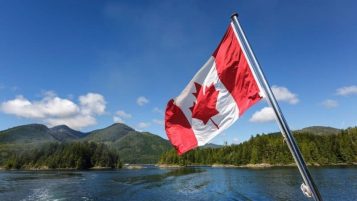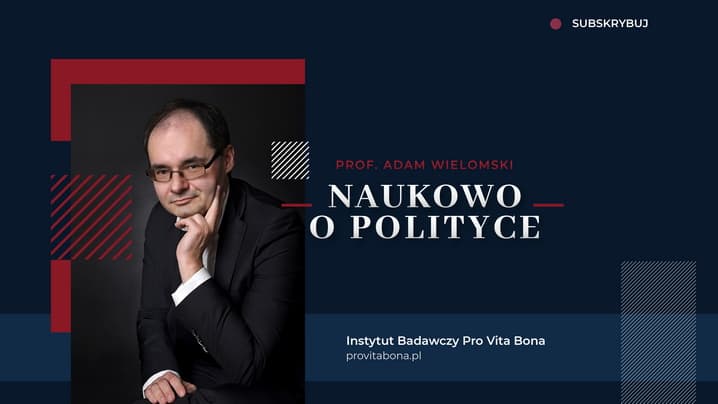On November 2, 2019, I attended the Annual Alumni Dinner of the University of Toronto Schools (UTS), which I had attended for six years in 1973-1979 (Grades 7 and 8, and four enriched /intensive years of high school). (Four years at that time was clearly also an accelerated program, as Grades 9-13 were then standard in Ontario.) 2019 was the 40th anniversary of the Class of ’79.
UTS had been founded in 1910 as a “model” school for gifted male students. (The plural in the name refers to the fact that a separate school for girls had originally been planned, but actually didn’t materialize.) UTS became a co-educational school in September 1973. Entrance to UTS is determined by competitive examinations, for which there are usually ten times more applicants writing than places available. In 1973, it was even more competitive, as 50% of the places had been reserved for girls. The incoming year at that time consisted of about 70 persons. The tuition fees in the 1970s were about $300 (Canadian) a year. The tuition fees now are about $27,000 (Canadian) a year. One of the reasons for this is that, in the early 1990s, the socialist New Democratic Party government of Ontario withdrew all public funding to the school, because of accusations of “elitism”. Actually, UTS now could be seen as just another expensive private school. The student body now consists of about half East Asians, and a quarter South Asians, in marked contrast to the 1970s, when it was mainly white. The Alumni Dinner brought forth in me gloomy reflections on how everything traditional is passing away in the current-day Canada. This passing away is certainly reflected in the recent federal election.
The October 21, 2019, Canadian federal election (conducted under the “first-past-the-post” system) brought to power a still strong minority Liberal government. The Liberals won 157 out of 338 seats mostly from Ontario, Quebec, and the Atlantic provinces (which amounted to 33.1% of the country’s popular vote). The Conservatives won 121 seats (34.4% of the popular vote) based mainly on truly overwhelming support from Western Canada, particularly from the provinces of Alberta and Saskatchewan. The sovereigntist/separatist Bloc Quebecois won 32 seats in Quebec (running candidates only in that mostly French-speaking province of Quebec), which was 7.7% of the countrywide popular vote. The New Democratic Party (NDP), Canada’s social democrats, won 24 seats (15.9 % of the popular vote) – and their support is expected to be crucial for the continuation of the Liberal minority government. The Green Party won three seats (6.5 % of the popular vote). There was one independent MP elected – Jody Wilson-Raybould – who had been kicked out of the Liberal caucus as a consequence of the SNC-Lavalin scandal. She claimed she had been unduly pressured as the Attorney-General to intervene preferentially on behalf of that firm. Also, the leader of the People’s Party of Canada (PPC), Maxime Bernier, who had formed the PPC as a decidedly more conservative alternative to the Conservatives, was defeated by a Conservative in the Quebec riding of Beauce. Bernier had been the sole MP for that party, and, given the fact that no other PPC MPs were elected, that party now has no representation in Parliament, while winning only 1.64% of the countrywide popular vote. The over-all turnout in the federal election was 66% of eligible Canadian voters.
The 2019 federal election could be read as a confirmation of the long-term left-leaning trend in Canada. Although Justin Trudeau was caught in a blackface/brownface scandal (from his earlier days), it had comparatively little impact on the election. Justin Trudeau is the son of Pierre Elliott Trudeau, who was Canada’s Prime Minister from 1968-1984 (except for the Progressive Conservative Joe Clark’s nine months in 1979-1980). Pierre Trudeau was clearly the architect of the present left-liberal Canada, especially through the introduction of the Charter of Rights and Freedoms (1982), into the Canadian constitutional structure, which essentially set in stone Trudeau’s most cherished principles as the highest law of the land. Pierre Trudeau enacted such policies as multiculturalism, high immigration policies, and bilingualism (the promotion of French), which no succeeding Prime Minister has challenged. Pierre Trudeau had been a Communist sympathizer, but ended up being an exemplary left-liberal and “cultural Marxist” – thoroughly re-shaping Canada according to his political preferences. Pierre Trudeau used the near-dictatorial power of the Canadian Prime Ministership to effect decisive, transformational change to the Canadian polity. Much of his success was based on the rock-solid support from Quebec in all of his federal elections.
It could be argued that, over the last five-and-a-half decades, the Canadian Right has failed to articulate a “counter-ethic” to the now-prevalent “Liberal idea of Canada” and is therefore on the road to extinction as a political power. The origins of the decline of the Canadian Right can be traced to the battles from 1963 to 1968 between Liberal Prime Minister Lester B. Pearson and the staunch Tory John Diefenbaker (who was Prime Minister from 1957 to 1963), and the initial burst of “Trudeaumania” in 1968 to 1972.
The crucial 1963 election was a conflict between a more traditional vision of Canada represented by Diefenbaker, and the “modernizing” tendencies represented by Pearson. It was, as George Parkin Grant, Canada’s leading traditionalist philosopher called it in the subtitle of his famous book, Lament for a Nation (1965), a “defeat of Canadian nationalism”. Pearson, for example, brought in the so-called “points” immigration system, which was a stepping away from a European origins focused immigration system. He also enacted Canada’s first bilingualism policies. Trudeau continued and expanded these “modernizing” tendencies, winning a huge majority in the 1968 federal election.
It was in those years that a more traditional Canada was fundamentally overturned, especially as symbolized by the adoption of the new flag, dubbed the “Pearson Pennant”, in 1965 – and with attendant, vast social engineering initiatives.
The culmination of “the Trudeau revolution” was the Charter of Rights and Freedoms (1982), which, for example, entrenched multiculturalism as a central Canadian principle, and embraced the idea of government initiatives on behalf of “historically disadvantaged” groups. The social framework of Canada had been changed so drastically by that time that Brian Mulroney’s Progressive Conservative majorities of 1984 and 1988 mostly ended up implementing what the Left advocated, such as affirmative action policies (called “employment equity” in Canada), and a strengthened Multiculturalism Act. Mulroney also raised immigration levels to a quarter-million persons a year, whereas they had actually fallen to 54,000 persons in Pierre Trudeau’s last year in office (1983-1984). The immigration levels were never subsequently lowered below a quarter-million persons a year, and now the Liberals are promising to accept a million immigrants in three years (or roughly 330,000 per year). Canada’s current population is around 37.6 million.
One of the most obvious direct political consequences of the high immigration policy is the destruction of what had been called until the 1960s, “Tory Toronto” – because it was seen as such a conservative and British-focused city (sometimes being called the Belfast of North America). It was snidely said of 1950s Toronto that on Sunday you could fire a cannon down Toronto’s main street and not hit anyone (because everyone was at church!) In both the 2015 and 2019 federal elections, the Conservatives were unable to win a single seat in Toronto. Also, the Conservatives had little success in the so-called Greater Toronto Area (GTA) – the belt of suburbs surrounding the City of Toronto, which are now also heavily immigrant.
The failure of the PPC is particularly distressing because they were the only better-known party that was promising to lower immigration to 150,000 persons a year. Given the continuous, very high immigration numbers, Canada will become a Third World majority country in a scant few decades. This would be a far more decisive and revolutionary transformation than anything attempted by Soviet Communism in the past. It is what some serious critics – and not just fringe extremists — have called “the great replacement”. In such a situation, one can be almost sure that the prospects of right-of-center parties in Canada would diminish still further.
The problem is that right-of-center parties in Canada basically sit back and accept all this very high, dissimilar immigration – which is continually undercutting their social base and weakening their support across the country. Just look at the results in Toronto and the GTA! Because of this, with every succeeding year, the cause of right-of-center parties becomes ever more difficult. And when a party finally emerged that offered some significant change in regard to high immigration and official multiculturalism policies, it did abysmally in the federal election.
Mulroney won the 1988 federal election by making it a referendum on the Canada-U.S. Free Trade Agreement. Traditionally, conservatives had opposed Free Trade with the U.S., whereas it had been the Liberal Party that had advocated it. In 1988, the roles were reversed. Patriotically arguing for Canada in 1988, John Turner, the leader of the Liberal Party, was more of a traditionalist conservative than Brian Mulroney.
The Canadian Right had tried to regroup through the launching of the Reform Party in 1987. The Reform Party faced a climate of unrelenting media and institutional hostility. Nevertheless, they won 52 seats in the 1993 federal election, and 60 seats in the 1997 federal election.
It could be argued that part of the Liberal Party’s strategy in the 1990s (in the wake of the collapse of Soviet Communism) was to give an appearance of fiscal conservatism. The extent of the Liberal austerity measures against the mass of ordinary Canadians included: not rescinding the Goods and Services Tax, as they had explicitly promised to do; the Unemployment Insurance reforms, which drastically reduced benefits; the Canada Pension Plan reforms which substantially raised the amount of contributions that have to be paid into the program; and the Old Age Pension and Old Age tax-exemption clawbacks – which kick in at a relatively modest income threshold. It could also be argued that the Liberal Party, especially in the 1990s, has colluded with big banks, big insurance companies, and other major corporations, to the detriment of the broad Canadian public. The Liberal Prime Minister of Canada between 1993 and 2003 was Jean Chretien, said to be one of Canada’s most popular Prime Ministers ever.
Preston Manning launched the United Alternative initiative in 1998. This culminated in the creation of the Canadian Alliance – whose full, official name was the Canadian Reform-Conservative Alliance. The initiative failed to achieve its ultimate goal – a merger with the federal Progressive Conservative party – largely because of the intransigence of one man – federal P.C. leader Joe Clark, a perennial bungler.
In 2000, Stockwell Day was selected leader of the Canadian Alliance. Although he began well, he was increasingly sandbagged by the accusation that he represented “Christian fundamentalist extremism.” The November 2000 election was full of various mendacious accusations by the Liberal Party.
In 2001, Stockwell Day was essentially destroyed by a concerted campaign of the media, the Liberal Party, and dissidents in his own caucus. The ensuing Canadian Alliance leadership selection process of 2002 was won by Stephen Harper.
The merger between the Canadian Alliance (under Stephen Harper) and the federal Progressive Conservatives (under the leadership of Peter MacKay), was formally announced on October 16, 2003, and finalized by December 2003. The adjective “progressive” was significantly dropped from the name of the reconstituted Conservative Party. This move, coming after decades of negativity for the Canadian Right, appeared to be a bright way forward.
In March 2004, Stephen Harper was selected leader of the new Conservative Party. The June 2004 election was perhaps one of the most critical in Canadian history, and was supposed to represent the culmination of the Canadian Right’s attempt to regain the political initiative. Nevertheless, Stephen Harper essentially flopped, when the Liberals managed to hang on to a minority government under Paul Martin, Jr.
The Liberal government was finally voted down in the federal Parliament in November 2005. In the ensuing January 2006 federal election, Harper won a minority government. By sticking to centrist policies, Harper continued in power until 2008, when he called an election himself. He won a strengthened mandate, but the majority still eluded him. Finally, the Conservative government was voted down in the federal Parliament in 2011. However, Harper was finally able to win a majority in the May 2011 election. But the Conservative majority government continued with centrist policies.
In the October 2015 federal election, Justin Trudeau (Pierre Elliott Trudeau’s son) won a strong majority. Actually, the number of persons who voted Conservative diminished only slightly from the 2011 election, but a massive number of young people and minorities (many of whom had never voted before) delivered the majority to Trudeau. Among Justin’s signature policies was the full legalization of cannabis. Some of Justin’s most important pronouncements were his declarations that “Canada is a post-national state” and that there is no “core Canadian identity”. In 2019, Justin Trudeau won a strong minority government, but it will probably be largely beholden to the NDP, which is even further left.
The Conservative leader Andrew Scheer notably failed to win the support of Ontario and Atlantic Canada. One of the main reasons for his failure was Liberal scaremongering about his “social conservatism”, i.e., that he would try to introduce restrictions on abortion, and try to rollback gay rights. Scheer repeatedly said he would not try to introduce restrictions on abortion, and that he fully supported same-sex marriage. He was also accused of cozying up to racists. He made a strong address to his party condemning racism. His campaign was also hurt by the allegations that he misrepresented himself as an insurance agent in his resume, as well as by the revelation that he was still a dual U.S.-Canadian citizen. (His father was an American.) Scheer also clearly lacked charisma.
It is interesting to consider what might have happened had Maxime Bernier won the leadership of the Conservative Party, back in 2017. Indeed, Scheer had won the leadership by a very slim margin at that time. Subsequently, he managed to alienate Bernier to the extent that the Quebec MP decided to form his own party – the PPC. One could speculate that Bernier would have done better than Scheer against Justin Trudeau.
It could be argued that one of the central reasons for the continuing failure of the Canadian Right since the 1960s is the operation of vast liberal-leaning media, juridical, academic, educational, bureaucratic, and corporate structures. This is a nexus of interests which certain American and European critics have called “the managerial-therapeutic regime” – which could be characterized as socially liberal and economically conservative. There is also the fact that “North American” pop-culture is the primary “lived cultural reality” for most people in Canada, which tends to reinforce socially liberal, consumerist/consumptionist, and antinomian attitudes, especially among the young. Unlike in most other Western countries, where various countervailing factors to the hegemony of the managerial-therapeutic regime are still in play, Canada exemplifies a managerial-therapeutic system in its “purest” form. Some of these countervailing factors in the United States which Canadians lack are the saliency of the military, the major presence of organized religion (both in regard to fundamentalist Protestants and traditionalist Catholics), homeschooling as a major social trend, the existence of probably hundreds of more traditional-leaning private colleges, and a large network of right-leaning think-tanks and publications.
Together, these are part of what some have called the “Right Nation.” At the same time, the United States has a more robust tradition of independent-minded, left-wing, anti-corporate, ecological, or agrarian dissent, such as that typified by Ralph Nader, Christopher Lasch, Rachel Carson, Helen and Scott Nearing, and Wendell Berry. It could be argued that social, political, cultural, and economic life in Canada – lacking, in fact, either an authentic Right or Left — has therefore become the least subject to popular will and democratic input, indeed, it could be called “post-democratic.” The lack of robust democratic participation and input in Canada should be of concern to theorists across the political spectrum. Insofar as the system maintains itself through massive “prior constraint” against a very broad array of ideas, beliefs, and opinions, its pretense to be upholding democracy is questionable. Such a profound lack of equilibrium is profoundly harmful to a more “ideal-typical” form and exercise of democracy.
There are also a number of structural and cultural political problems in which the Canadian Right has been and is embroiled, most notably, their lack of appeal in Quebec. There is the long-term “Quebec problem” of the Canadian Right. There is also the lack of appeal to older immigrant groups (the so-called “white ethnics”) – who might have been a natural constituency for the Right. Canadian conservatives clearly have a small appeal to newer immigrant groups (the so-called “visible minorities”). However, there is probably comparatively little they could do to increase this appeal to groups that view themselves and mobilize politically as outsiders. The Canadian situation is markedly different than the situation in the United States, especially in regard to the extent of highly principled “minority conservatives” in both countries.
Given the direction of development of historical, social, cultural, and economic processes in Canada over the last five-and-a-half decades, it could be seen that the Canadian Right is approaching extinction in Canada. As a result of the “Trudeau revolution” which has created the so-called “Trudeaupia”, Canada is one of the most “politically-correct” countries on the planet.
The future of Canadian politics is therefore very likely to move in the direction of a “post-democratic” and de facto “one-party” system – which will be overwhelmingly socially liberal but occasionally show efforts at fiscal belt-tightening. There are indeed discernible plutocratic aspects to the current-day Canada, and quite a few persons who are unemployed or under-employed in what is to a considerable number of unlucky individuals a “hyper-competitive” environment.
The only realistic hope for resistance to the Left in Canada may be the building up of regionalist alternatives, which still seems possible in Western Canada. The recent federal election reveals a clear regional divide, and there is now talk of a so-called “Wexit” (Western exit). Also, Quebec separatism appears to be surging, given the 2019 federal election result. Perhaps the only way the country could be made more tolerable to social traditionalists is through the success of massive decentralization initiatives.
Mark Wegierski



